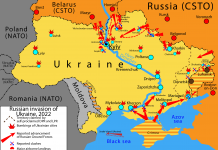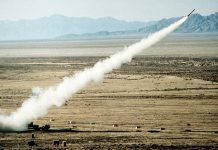
U.S. Marines from the 3rd Marine Littoral Regiment, stationed in Hawaii, have recently been observed unloading advanced military systems, including the Navy-Marine Expeditionary Ship Interdiction System (NMESIS), at Cagayan North International Airport in the northern Philippines. This deployment, disclosed by Defense Secretary Pete Hegseth during his Manila visit, underscores the strengthening U.S.-Philippine defense collaboration amid rising tensions in the Indo-Pacific.
The NMESIS will be integrated into the annual Balikatan exercise, a key joint military drill from April 21 to May 9, aimed at improving interoperability and simulating defense responses to potential aggression, particularly from China. This year’s exercise will also feature the full participation of Japan’s Self-Defense Forces and Australian forces, along with observers from 16 other nations, signifying a broader regional security alignment.
The deployment of NMESIS is a strategic maneuver within the shifting geopolitical context of the Indo-Pacific. NMESIS is a cutting-edge anti-ship missile system, enhancing small, mobile units’ capacity to strike maritime targets with precision from land-based positions. Built around the Naval Strike Missile, which has a range of 100 nautical miles, NMESIS is mounted on the Oshkosh Remotely Operated Ground Unit for Expeditionary Fires, offering rapid deployment and minimizing personnel exposure in contested environments. Its mobility allows Marines to establish temporary firing positions on remote islands or coastlines, a critical capability aligned with the Marine Corps’ Expeditionary Advanced Base Operations concept, which focuses on countering adversaries’ anti-access/area denial strategies, such as those employed by China in the South China Sea.
Technologically, NMESIS integrates advanced systems, including the Naval Strike Missile, which uses inertial navigation, GPS, and an infrared seeker for high-precision targeting. Its low-altitude flight profile and unpredictable trajectory make it difficult for enemy defenses to intercept. The system’s unmanned platform increases survivability by allowing operators to control the launcher remotely, reducing detection and counterattack risks. A 2020 test validated NMESIS as a “ship killer,” although it will not be fired during Balikatan 2025. Instead, the 3rd Marine Littoral Regiment will conduct simulated fire missions to test its integration into joint operations.
In comparison to global counterparts, such as China’s YJ-12B and Russia’s Bastion-P systems, NMESIS prioritizes mobility and flexibility over extended range. While these other systems possess greater reach, NMESIS’s ability to rapidly reposition across island chains gives it a distinct edge in the region’s dynamic environment.
The 3rd Marine Littoral Regiment, part of the Marine Corps’ Force Design 2030 initiative, represents a shift toward smaller, more agile units, focused on speed and precision rather than heavy armor. This new operational paradigm is designed to sustain a persistent presence within adversary engagement zones, a strategy requiring advanced technologies like NMESIS, as well as drones, cyber capabilities, and enhanced intelligence gathering.
Colonel John G. Lehane, commanding officer of the regiment, highlighted the strategic significance of NMESIS, noting its enhancement of the regiment’s sea denial capabilities. This reflects broader shifts in U.S. military strategy, particularly in response to China’s growing naval and missile forces, as evidenced by China’s rapidly expanding fleet, now surpassing the U.S. Navy’s.
Balikatan 2025 will involve approximately 14,000 troops, with the participation of Japan’s Self-Defense Forces marking a historic shift in Tokyo’s regional security role. The multilateral nature of this year’s exercise, which includes Australian forces and observers from countries like India and Vietnam, suggests a growing coalition aimed at countering China’s influence in the South China Sea and beyond.
Geopolitically, Balikatan 2025 is framed by the ongoing tensions over the South China Sea, where China’s territorial claims remain contested. Beijing has expressed opposition to U.S. military deployments in the region, including the Typhon missile system and the arrival of NMESIS. The U.S. presence in the Philippines raises questions about Manila’s strategic alignment with Washington, with potential domestic political implications.
The continued presence of NMESIS in the region, including its integration into future exercises, may enhance the U.S.’s military posture in the Indo-Pacific. However, logistical challenges, such as sustaining the system in remote locations and managing security in contested environments, will test operational resilience. The system’s mobility could complicate China’s naval operations, particularly in confined areas like the South China Sea.
Looking forward, the U.S. military’s deployment of NMESIS could pave the way for similar systems in other allied nations, reinforcing a networked defense architecture across the region. Yet, these moves carry risks of escalating tensions, as they heighten the stakes in an already volatile region.
In conclusion, the deployment of NMESIS and the expanded scope of Balikatan 2025 reflect a crucial moment in the Indo-Pacific’s security dynamics. The Marine Corps’ adoption of advanced technologies and its focus on agile, distributed operations signal a broader adaptation to great power competition. As these developments unfold, the impact of NMESIS on the regional balance of power remains a key variable in shaping future military strategies.




